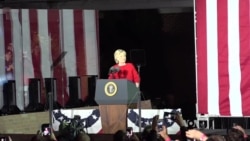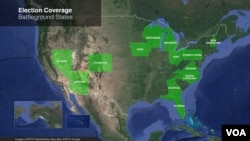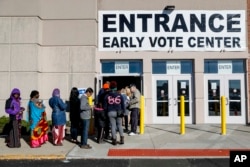With voting underway in the U.S. presidential election, poll watchers are focusing on reports from several so-called battleground or swing states as leading indicators for determining who will win.
The U.S. president is not picked by national popular vote. Instead, candidates try to win the popular vote in each state, and by doing so, win the state's electoral votes. The more people who live in a state, the more electoral votes go to the victor.
Outcomes somewhat in doubt
The battleground states are ones where the outcome is at least somewhat in doubt and where candidates have spent a much bigger portion of their time and campaign dollars to try to woo voters to their side.
In the past week, the battleground states that have been the biggest focus of both the U.S. media and the candidates are Florida, North Carolina, Michigan, Ohio, Pennsylvania, Nevada and Arizona.
Polls close earlier in the eastern U.S. states, which means Florida, North Carolina, Pennsylvania, and Ohio could be the first states to show whether Hillary Clinton or Donald Trump has the advantage.
Both campaigns have focused attention on North Carolina in particular. CBS News reports that since the Democratic and Republican conventions in July, Clinton and Trump have visited North Carolina a combined 21 times to try to boost their support.
Florida and Ohio, with their large numbers of electoral votes, are the two swing states that seem to feature in every election. Going back to the 1976 vote, a Republican has won Florida six times and a Democrat four times. In Ohio, the split is even at five-to-five.
Divided states, late results
Just how close the vote totals are will determine when media outlets are able to project either Trump or Clinton the winner.
In 2004, an extremely close race in Ohio left two networks calling the state for President George W. Bush just before 1 a.m. on the morning after Election Day and putting him just one electoral vote from clinching another term. Others waited until later in the day to be sure.
In 2000, it was Florida that held up Bush’s first election to the presidency. His opponent, Democrat Al Gore, challenged the initial results, setting off a legal battle that ended with a U.S. Supreme Court decision more than a month after voters cast their ballots.






























